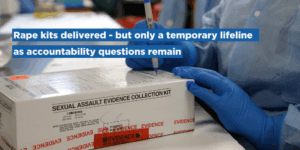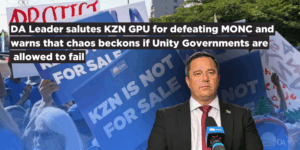Eskom is full of great promises about its plants and emissions, which turn into nothing but poorly heated air
Sadly, lives have always had a value that can be arbitraged. With this in mind, the context of the government-imposed lockdown vis-à-vis Eskom’s stance on its power stations is worth interrogation.
It is interesting to note a recent Bloomberg report that Eskom was looking for the terms of a World Bank loan to be relaxed — actually, more a deletion than a relaxation: Eskom is looking to do away with key pollution-abatement equipment because it would cost R42bn.
Meanwhile, Ebrahim “E-commerce” Patel has sought to trash estimates by economists of what the lockdown has cost the economy. For my money, I would rather take Sars commissioner Edward Kieswetter’s calculations when he says that Sars will collect R285bn less — a direct result of Patel and his cabinet colleagues’ lockdown regulations.
The revenue shortfall is made up of lower collections of PAYE, VAT, import taxes, excise taxes and, of course, sin taxes — all paid for by corporate and consumer SA.
But back to Eskom, whose pollution emissions, the subject of a lawsuit that has been filed against the government, account for between 300 and just more than 2,000 deaths a year, according to studies carried out by Eskom and independent experts.
In a nutshell, Eskom wants to be absolved of having to spend R42bn on equipment when they know their emissions directly cause, at the very minimum, 300 deaths a year, but by some strange twist in logic it is completely acceptable to shut down SA businesses and cause citizens and the fiscus to absorb a charge well in excess of R285bn when a few hundred people have succumbed to Covid-19?
Since then, practically nothing has been done, and now the broken utility intends to do less
In a question from energy expert Chris Yelland to Eskom COO Jan Oberholzer (way back in 2018), Oberholzer had the following to say: “Yes, Eskom has the intention of complying with environmental legislation and regulations insofar as possible, and will invest in the necessary equipment and plant upgrades to ensure that its coal-fired power stations meet the applicable minimum emission standards. We understand and accept this responsibility.”
However, Eskom needs to be in a position to finance this, he said, which it cannot do at present. We are aware that the department of environmental affairs requires Eskom to implement the necessary changes. Eskom is also aware of the public perceptions and reaction to the damage the burning of coal does to the environment and to human health, and understands its responsibilities in this regard.
Since then, practically nothing has been done, and now the broken utility intends to do less. Eskom blithely says “installing flue-gas desulphurisation (FGD) at Medupi may reduce the impact on health by a small margin, but it will result in other negative environmental impacts”.
The utility argues that switching older plants away from coal will reduce emissions of “sulphur dioxide, nitrous oxide, particulates and carbon dioxide emissions [but] in addition to being expensive, the equipment would increase water consumption, necessitate the use of large quantities of limestone and produce additional carbon dioxide, a greenhouse gas. Some of the money saved could be used to adapt some older, coal-fired plants to use other fuel”.
What other fuel? Gas? Where is the gas going to come from? It would require a pipeline for delivery and would need to be stored in large volumes in underground facilities and in smaller volumes in tanks above or below ground. Who is going to pay for the installation of this storage and distribution network?
Can we really trust Eskom?
With regard to FGD, the reliability of the plants — poorly built, run downwards at breakneck speed and often requiring massive rebuild — do not justify the investment even if the money could be found. The cost of FGD installation is 6% of new-plant costs (current costs at Medupi stand at R234bn) and so the exercise is fraught with price and build complexities. Add to this that, in the event of sale, no-one will buy a plant without FGD and the self-inflicted conundrum seems insurmountable.
Yet at a standing committee on public accounts meeting held in March this year, a gung-ho Oberholzer confirmed that Eskom was financially able to finish both the Medupi and Khusile projects — but two months later this has become a R42bn problem? Are we really able to trust Eskom to tinker with multiple older plants at huge cost given a track record that is dubious to say the least?
Reliable power is sorely needed by industry to rebuild an economy that has been all but destroyed because of a lockdown that has been extended well past the promised curve-flattening and medical capacity-building sell-by date.
It is insulting in the extreme to the communities that live in the immediate vicinity of the plants, and makes a mockery of the public participation process. Clearly life is worth less if the government is paying. The double standards displayed are shocking, but then this is what we have come to expect. Just as galling is the grandstanding by the government despite the painfully obvious arbitrage over the value of lives and massive warning signs posted by many local experts.
Yelland wrote recently on Moneyweb that “disturbing new evidence has come to light of serious under-reporting of legal contraventions of particulate matter (PM) emission limits to the regulator [Nersa] and the public, by SA’s national electricity utility Eskom”.
It appears that there has been systematic misrepresentation and under-reporting of contraventions of PM emission limits in reports, documents and graphs prepared by officials at Kendal power station, which were not identified by responsible environmental experts, senior management and executives at Eskom.
Has it perhaps escaped Eskom and its shareholder that under-reporting of emission limits to the regulators and the public is a very serious legal contravention that affects the lives, health and safety of the public?
Clearly, heads are going to be banging between Pravin Gordhan (the minister in charge of Eskom and other public enterprises) and Barbara Creecy (minister for the environment, forestry and fisheries) — and so they should.




